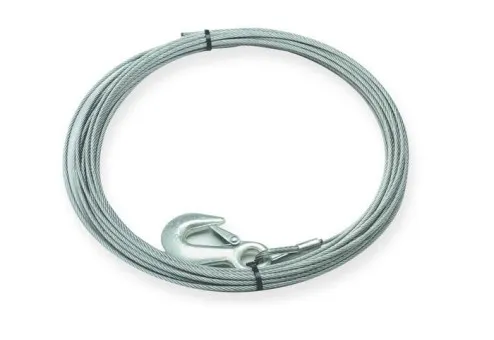Winches & Pulleys
Winches & Pulleys
Welcome to ULS, your premier online source for winches and pulleys and other material handling and lifting equipment. We offer a wide selection of high-quality products from leading manufacturers, all CE marked and compliant with current legislations.
Whether you need a boat trailer winch, a robust electric winch, or a versatile block and tackle system, we have the perfect solution for your needs. Explore our extensive range, including hand-operated winches, sheaves, sheave blocks, and wall-mounted wire winches.
Can't find what you're looking for? Contact us – we have access to thousands more products than shown online.
 Tiger Winch Wire Ropes
Tiger Winch Wire Ropes
WWR
Our range of top quality galvanized winch cables manufactured to suit the Tiger Lifting BHW range of winches and the Tiger Lifting SF2200 Hand Winch
£32.98 ex VAT
£39.58 inc VAT
Block And Tackle Explained
A block and tackle is a pulley system designed to multiply your lifting force. It uses two or more pulleys with a rope or cable threaded between them. Our selection includes both block and tackle pulley systems and chain block and tackle options, ideal for various lifting applications.
Winches and Pulleys: The Perfect Combination!
For maximum lifting power and versatility, combine a winch with a pulley system. Winches and pulleys work together to provide both pulling and lifting capabilities. Whether you need to move a boat with a boat winch and pulley, or lift materials on a construction site with a scaffold winch and pulley, we have the equipment you need.
Winches and Pulleys FAQ's
What Is A Winch?
A winch is a mechanical device used to pull or lift heavy objects. It consists of a drum that winds a cable or rope, a power source (motor or manual crank), a gear system for increased power, and a brake. We offer a variety of winches, including electric winches, small electric winches, and specialized winches like the boat winch and scaffold winch.
How Does A Winch Work?
When powered, a winch's drum rotates, winding the cable to pull the load. The internal gears provide a mechanical advantage, allowing even a small electric winch to handle significant weight. A brake holds the load securely. Boat trailer winches and similar types are essential for loading and unloading equipment. For vertical lifting, consider our scaffold winch options.
What Is A Pulley?
A pulley is a simple device that changes the direction of force, making lifting easier. It consists of a wheel and axle. Pulleys are often used in block and tackle systems to increase lifting power. We offer a variety of pulleys, including chain pulleys, scaffold pulleys, and pulley systems for lifting.
How Does A Pulley Work?
A fixed pulley redirects force. A movable pulley reduces the lifting force. A compound pulley system, like a block and tackle, combines these for maximum mechanical advantage. To understand how does the pulley system work, consider the number of rope segments supporting the load – more segments mean less force needed. This principle is used in pulley lifting systems and pulley systems for lifting heavy objects, including pulley block and tackle setups. For scaffolding applications, we offer the pulley wheel for scaffolding.




